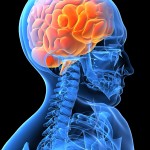 Neurotransmitters are a class of chemical messengers in the body that help regulate, either directly or indirectly, most of the other systems and functions in the body. Most people have heard of several common neurotransmitters, including serotonin, dopamine, norepinephrine and epinephrine (also known as adrenaline). They may even be familiar with at least some of their functions in regards to mood, especially depression and/or anxiety or ADD/ADHD. Usually this is because they know the standard medical treatment for these disorders is to use a medication that works on specific neurotransmitters, including selective-serotonin-reuptake-inhibitors (SSRIs); selective-norepinephrine-reuptake-inhibitors (SNRIs); or norepinephrine-dopamine reuptake inhibitors.
Neurotransmitters are a class of chemical messengers in the body that help regulate, either directly or indirectly, most of the other systems and functions in the body. Most people have heard of several common neurotransmitters, including serotonin, dopamine, norepinephrine and epinephrine (also known as adrenaline). They may even be familiar with at least some of their functions in regards to mood, especially depression and/or anxiety or ADD/ADHD. Usually this is because they know the standard medical treatment for these disorders is to use a medication that works on specific neurotransmitters, including selective-serotonin-reuptake-inhibitors (SSRIs); selective-norepinephrine-reuptake-inhibitors (SNRIs); or norepinephrine-dopamine reuptake inhibitors.
What most people do not know is that neurotransmitter imbalances can dramatically affect many other aspects of a person’s health and well-being and can cause or exacerbate any of the following conditions:
| Depression | Anxiety | Migraines |
| Insomnia | Cravings | Increased appetite |
| Pain tolerance | Hot flashes | Mood swings |
| PMS | Sleep difficulties | Poor memory |
| Weight gain | Poor weight loss | Hormone imbalances |
| Poor mental focus | Poor concentration | Restless legs |
| Fibromyalgia | Fatigue/Chronic fatigue | Thyroid function |
| Parkinson’s Disease | ADD/ADHD | Trichotillomania |
| Addictions | Binging behavior | Eating disorders |
| Obsessive thoughts | Compulsion | Crohn’s disease |
The symptoms caused by neurotransmitter imbalance can vary from person to person. In addition, an individual will often exhibit multiple signs of neurotransmitter imbalance (i.e., several of the symptoms or conditions listed in the table above) without even knowing they are related.
However, once you know that neurotransmitters are simply chemical messengers, it only makes sense that imbalances in neurotransmitters will cause a communication breakdown in the body which will lead to symptoms of some sort. These symptoms are your body’s way of alerting you that something is not working right. Unfortunately, if/when a person seeks medical attention for these issues, they are often given medications that do nothing to correct the underlying problem and can make it much worse.
Why Medications aren’t the answer
Many medications are used to try and manipulate the release or re-uptake of neurotransmitters in the brain. Stimulants, such as amphetamines (i.e., methamphetamine, “speed”, Adderall, Vyvanse, Dexedrine), ecstasy (MDMA), cocaine, methylphenidate (i.e., Ritalin, Concerta), norepinephrine-reuptake inhibitors (i.e., Strattera, Edronax), and norepinephrine-dopamine reuptake inhibitors (i.e., Wellbutrin, Zyman) exert their effects by increasing the activity of norepinephrine and/or dopamine in the brain by either blocking re-uptake or stimulating the release of the specific neurotransmitters. This can have the effect of increased neurotransmission for a period of time.
Likewise, many anti-anxiety medications, sleep aids (i.e., Ambien, Lunesta) and other depressants, such as alcohol, barbiturates (i.e., phenobarbital, Fioricet), and benzodiazepines (i.e., Xanax, Klonopin, Valium, Lorazepam) work by facilitating gamma-aminobutyric acid (GABA) activity or inhibiting glutamate or catecholamine (i.e., dopamine, norepinephrine or epinephrine) activity. Other medications work on serotonin, such as selective serotonin reuptake inhibitors (i.e., Paxil, Prozac, Zoloft, Celexa, Lexapro and Luvox) which block the reuptake of serotonin back into the pre-synaptic nerve, or triptans (i.e., Imitrex, Maxalt, Amerge, Zomig) used for migraines which can temporarily dock with serotonin receptors and help alleviate the pain of a migraine headache. Again, the effect may seem similar to increased neurotransmission for a period of time. However, that effect comes at a cost.
The problem with these medications and many others from a neurotransmitter point of view is that although they may have an effect that looks like increased neurotransmitter function, they do not actually help the body create more neurotransmitters. What they do is simply shuffle neurotransmitters around in attempt to make it appear that there is more neurotransmitter than there actually is. In essence, these medications trick the body into thinking there is more neurotransmitter when in fact, the medications are just moving neurotransmitters from one place to another. This can have at least two undesirable affects.
Our bodies like to be in balance. If something goes up, the body has many mechanisms to bring that something back down to achieve a steady-state; this is often referred to as homeostasis. When these medications trick the body into thinking there is more neurotransmitter than there actually is, the body naturally increases the degradation (i.e., destruction) of more neurotransmitter. Because these medications don’t actually help the body make additional neurotransmitter, this increased degradation will cause additional neurotransmitter depletion over time.
This is often what is happening when medications, such as anti-depressants “stop working”; this often happens after months or years of use. This happens when the increased degradation of neurotransmitter has depleted a person’s neurotransmitter reserves to such a point that there is not enough neurotransmitter left for the drug to shuffle around. In essence, a person in this state is more neurotransmitter depleted than when they started the medication and often experiences not only a worsening of their original symptoms, but several other symptoms related to neurotransmitter imbalance. Unfortunately, at this point, a person is usually prescribed more of a given mediation or additional medications to try and help them feel better; however, this only makes the underlying problem worse and continues a downward spiral of ill-health.
The second detrimental effect of neurotransmitter-based medication use has to do with actual drug-induced damage to the post-synaptic neuron and/or its receptors. The post-synaptic neuron receives information and the receptor is what catches neurotransmitter to get that information. Think about throwing a baseball to someone. The baseball represents a neurotransmitter, the person you are throwing the ball to is the post-synaptic neuron and the person’s baseball glove is the receptor. If everything works well, you throw them the baseball, they catch it in their glove and they can throw the ball to someone else. This is basically how information is transmitted by neurotransmitters.
However, many medications can cause damage to the post-synaptic neuron and/or its neurotransmitter receptors. In or analogy, the drugs would make the person unable to catch the ball in some manner, either by harming the person directly (i.e., broken arm) or by damaging their glove. When you throw the ball to them, they either can’t catch it or can’t throw it to anyone else and communication stops. This is bad news from a neurotransmitter standpoint, as it disrupts normal communication, which results in increased symptoms of imbalance.
Furthermore, the damage to the post-synaptic neuron and/or receptor may be permanent; this is called neurotoxicity. This means that the receptor is damaged forever. When this happens, people often feel worse and/or develop additional symptoms of neurotransmitter imbalance. When they report this to their doctors, they are often given higher doses of medication or additional medications which again make the underlying problem worse.
Address the cause to find a solution
The causes of all the disorders listed in the table at the beginning of this article are due to impaired or improper neurotransmitter function. Therefore, in order to eliminate these symptoms, we have to restore proper neurotransmitter function. This can be done by giving the body the nutrients it needs to make the necessary neurotransmitters and/or overcome neurotoxicity.
Since amino acids are the building blocks from which neurotransmitters are made, the process of determining the specific combination of nutrients needed by each person is often referred to as “amino acid therapy”. Specialized training is required to effectively use amino acid therapy in clinical practice. With over 600 clinics across the United States currently using this therapy, there may be one in your area; if not, several clinics also conduct phone consultations to assist clients who can otherwise not receive the care they need.
To learn more about amino acid therapy or to find a practitioner near you, please visit:


Thanks for touching on a topic that is very untlcformaboe for a lot of people. I deal with depression on a daily basis. I’ve gone the full route counseling, medication, etc. There are a few things that I do want to make sure get mentioned.1. If you think you may be suffering from depression or if you are a family member of one who might be suffering, in attention to talking with your pastor seek medical attention.2. Counseling look for a Christian counselor. Be VERY careful and selective with the counselor you choose. Referrals from others and from pastors are good sources. Counseling is key b/c this person can help you assess the situation from an independent, third-party point of view. It is hard to be accurately assess the where you are when you are in the middle of it.3. Medication You may need medication. In my case, it’s necessary because of a chemical imbalance thanks to genetics. That is ok. That is nothing to be ashamed of. If it’s necessary, it’s necessary. It’s no different than insulin for diabetes or blood pressure medicine.Thanks again for this timely topic.
Thanks for sharing your experience and recommendations Leo. Note, that it may also be possible to overcome genetic susceptibilities to neurotransmitter imbalances with amino acid therapy: http://amino-acid-therapy.com/.
Sincerely,
Dr Chad